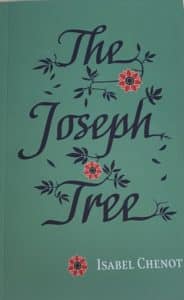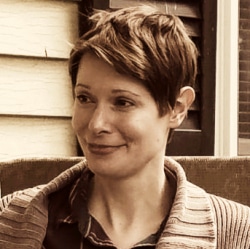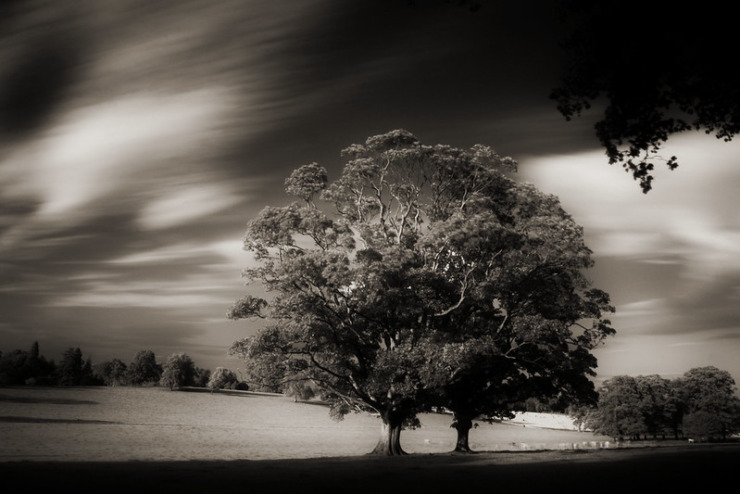Poet Isabel Chenot Finds the Hope in Grief
Isabel Chenot includes a simple yet arresting introduction to her new poetry collection, The Joseph Tree. She writes that the poems are dedicated to “my friend and the little son she buried.” You might expect that the poems to follow would explore the profound grief of losing a child. But they don’t. Instead, she writes of landscapes and mountains, journeys away and those to return home, rain on mown grass, sunsets, and maps.
Only one poem focuses on the loss of the child mentioned in the introduction: “To a Mother in Burying Her Infant Son.” And it’s inserted between two other poems, “On Seeing WWI Photographs of Flanders Fields” and “Waiting for Spring.” The three poems are collectively entitled “May Triptych.” Together, the three poems speak to a collective loss (how many mothers lost children to the fields of Flanders?), an individual loss no less painful, and the hope and recovery to come. “Because of Winter,” Chenot writes, “there is Spring.”
These ideas of loss and hope permeate the collection. The poet finds that hope in the geography of the land, the way light “walks on water,” a desert rain, the migration of salmon, a barren shore, a Salem graveyard, and the desert before a storm. There is a strong faith in nature’s design and purpose expressed here. The Joseph Tree is filled with poems of quiet contemplation of natural beauty—and the hope and gratitude that beauty inspires.
Watch as Chenot travels a road whose name doesn’t matter because of what its surrounding countryside inspires.
A Nameless Road

We saw them hum
around the edge of light
and cut our motor. In the damp,
we listened.
Every stalk of suppliant rye—
every stalk half-toward the rim
of higher land was leaning, with a lamp
half-upward
(kneeling with them, so was I):
there was glimmer on each bleached-white
curve, from the sickle glint of sky.
Reading this collection is like stepping into a painting, or a series of paintings. Like paintings, each poem may have a design and a purpose. They may tell a story, they may offer a simple or complex message, or they may simply be there to evoke the sense of awe.

Isabel Chenot
Chenot’s poems have been published in a number of literary and online journals, including Quill & Parchment, Avocet, Anima, Assisi, Blue Unicorn, The Rabbit Room, Spirit Fire, and Story Warren. She’s also published a poetry chapbook, Leaves Like Spindrift. Her retelling of a fairy tale, West of Moonlight, East of Dawn, will be published this year by Propertius Press.
I searched—unsuccessfully—for Chenot’s website, other than finding a few brief descriptions at book and journal pages. It’s as if its absence tells you not to look for the author but instead to consider what she’s written; that’s how she tells her story. And the poems of The Joseph Tree tell that story in a lyrical, and rather wondrous, way.
Photo by Neal Fowler, Creative Commons, via Flickr. Post by Glynn Young.
How to Read a Poem uses images like the mouse, the hive, the switch (from the Billy Collins poem)—to guide readers into new ways of understanding poems. Anthology included.
“I require all our incoming poetry students—in the MFA I direct—to buy and read this book.”
—Jeanetta Calhoun Mish
- Ben Palpant Talks with 17 Poets About, Well, Poetry - April 1, 2025
- Poets and Poems: Forrest Gander and “Mojave Ghost” - March 27, 2025
- Poets and Poems: Siân Killingsworth and “Hiraeth” - March 25, 2025


Bethany Rohde says
“Reading this collection is like stepping into a painting, or a series of paintings.” Sounds like a beautiful reading experience. Thanks for sharing this with us.
I love her poem, and that opening line, “The mountains still me like a lullaby.” That sort of comforting landscape connects with the way I respond to the blue hills of the Skagit Valley. (I talk about it a little in my Postcard from Burrow & Meadow: No. 2. “Those powder-blue hills are grandparents of a grown grandchild, wrapping around me from a distance, I’m encircled in their silent waves.”)
I like what you say here too, “It’s as if its absence tells you not to look for the author but instead to consider what she’s written; that’s how she tells her story.”